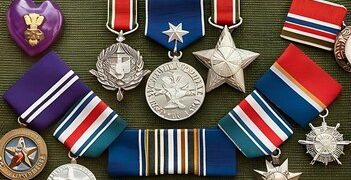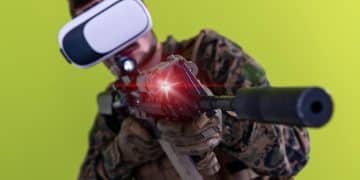The Cold War’s Space Race: Impact on Military Technology
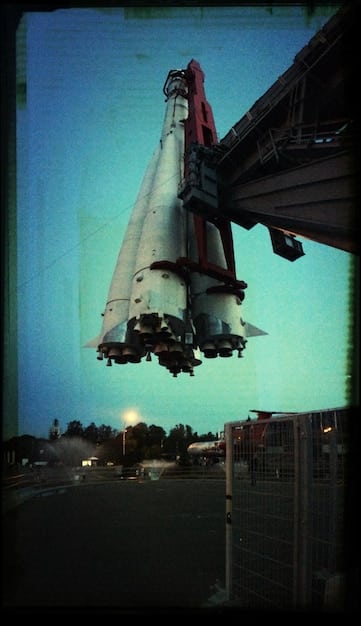
The Cold War’s space race significantly accelerated advancements in military technology, driving innovation in rocketry, satellite technology, and surveillance capabilities as the United States and the Soviet Union competed for dominance beyond Earth.
The Cold War: How Did the Space Race Influence Military Technology? The space race, a captivating spectacle of scientific achievement, was also a crucial theater in the Cold War, significantly impacting military capabilities and strategies of both the United States and the Soviet Union.
The Dawn of the Space Age and Military Implications
The launch of Sputnik 1 by the Soviet Union in 1957 marked the beginning of the space age, sending shockwaves through the United States and igniting a fierce competition for technological supremacy. This event had profound implications for military technology, as both nations recognized the strategic advantages of space.
The initial response in the US was a mix of dismay and determination to catch up to the Soviets. This spurred significant investment in science, technology, engineering, and mathematics (STEM) education and research.
From Sputnik to Military Satellites
The early satellites were primarily focused on communication and observation. However, it wasn’t long before their military applications became apparent.
Military satellites became essential for:
- Reconnaissance: Providing intelligence on enemy troop movements and missile deployments.
- Communication: Ensuring secure and reliable communication between military units.
- Navigation: Enabling precise navigation for ships, aircraft, and missiles.
The development of these capabilities transformed military strategy and operations, enhancing situational awareness and enabling more effective command and control.
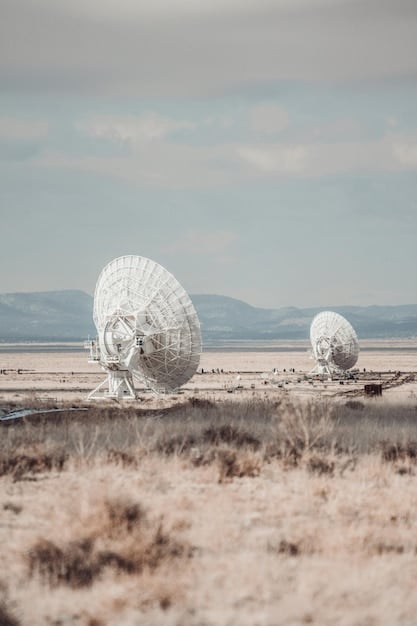
The era of space exploration significantly influenced military thinking, shifting focus towards satellite technology and long range capabilities.
Rocketry: From Space Launchers to Ballistic Missiles
The space race heavily influenced the development of rocketry. This development has influenced military capabilities as rockets served a dual purpose: launching satellites and deploying nuclear weapons.
The technology behind launching satellites into orbit is directly related to the technology required to deliver a warhead across continents. This created a situation where advancements in space technology directly translated into advancements in military capabilities.
ICBM Development
Intercontinental Ballistic Missiles (ICBMs) became the backbone of nuclear deterrence during the Cold War. Understanding this development is crucial to answering the question: **The Cold War: How Did the Space Race Influence Military Technology?**
Key elements of ICBM development included:
- Improved accuracy: Enhancements in guidance systems to precisely target enemy locations.
- Increased range: Development of more powerful rockets to reach distant targets.
- Multiple warheads: The ability to carry multiple independently targetable reentry vehicles (MIRVs), increasing destructive power.
The constant refinement of ICBM technology led to a dangerous arms race, with each side striving to maintain a credible nuclear deterrent.
The interplay between rocketry and military advancements cemented the connection between space and warfare.
Surveillance Technology: Eyes in the Sky
Satellite-based surveillance technologies emerged as powerful tools during the Cold War. These assets offered unparalleled access to monitor enemy activities, gather intelligence, and verify arms control agreements.
The ability to observe potential adversaries from space provided valuable insights into their military capabilities and intentions. This capability was essential for maintaining a strategic balance.
Key Surveillance Technologies
Several key technologies were developed and utilized to improve military efforts.
These included:
- Optical reconnaissance: High-resolution cameras capable of capturing detailed images of ground targets.
- Electronic intelligence (ELINT): Satellites designed to intercept and analyze enemy radio communications.
- Early warning systems: Satellites equipped with sensors to detect missile launches, providing crucial early warning to allow response.
These surveillance capabilities gave each side a significant advantage, allowing them to react to threats and plan accordingly.
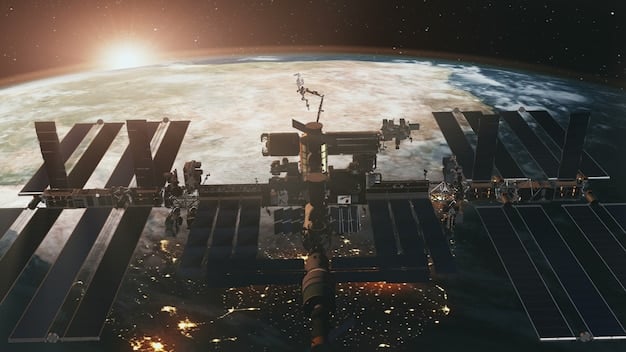
The importance of surveillance technology in maintaining deterrence and strategic advantage cannot be overstated.
Navigation Systems: Guiding Military Operations
The space race spurred the development of sophisticated navigation systems like GPS (Global Positioning System), which revolutionized military operations. These satellite-based systems provided precise location data, enhancing accuracy and efficiency in various military applications.
Initially, navigation was achieved via a combination of maps and ground-based radar. However, weather conditions and terrain limited the effectiveness.
The Evolution of GPS
The development of GPS represents a significant milestone in military technology.
Some elements include:
- Improved accuracy: Providing precise location data for troops, vehicles, and weapons.
- All-weather capability: Operating effectively regardless of weather conditions.
- Global coverage: Offering seamless navigation anywhere in the world.
GPS technology transformed military logistics, reconnaissance, and precision strike capabilities, giving a decisive advantage to those who had access to it.
Navigation systems, such as GPS, enhanced real-time awareness.
Communication Satellites: Bridging the Distance
Communication satellites were essential for maintaining reliable communication channels between military units during the Cold War. As the range of weapons and strategic operations expanded, the need for secure and instantaneous communication became critical.
Communication was dependent on terrestrial cables and shortwave radio. However, these methods were vulnerable to interference and had limited bandwidth.
Advantages of Satellite Communication
The use of communication satellites offered many benefits.
Among them:
- Global coverage: Providing communication links to remote locations worldwide.
- High bandwidth: Enabling the transmission of large amounts of data, including voice, video, and imagery.
- Secure communication: Employing encryption technologies to protect sensitive information from interception.
Satellite communication played a crucial role in coordinating military operations, transmitting intelligence, and ensuring effective command and control.
Overall, communication satellites were a key ingredient for improved situational awareness and cohesion among units.
Arms Control and Verification: Monitoring Compliance
The development of space-based surveillance technologies played a crucial role in arms control and verification during the Cold War. Satellites equipped with high-resolution cameras and sensors allowed both sides to monitor compliance with arms control agreements, reducing the risk of cheating and surprise attacks.
Arms control treaties were difficult to enforce without verification mechanisms. Space-based surveillance provided a means to ensure compliance.
The Role of Satellites
The use of satellites for arms control helped to foster mutual trust and stability.
The surveillance of different activities became possible and this included:
- Monitoring missile deployments: Tracking the construction and deployment of ICBMs.
- Verifying nuclear testing bans: Detecting underground nuclear explosions.
- Counting military equipment: Assessing the size and composition of enemy forces.
Satellite-based verification helped to reduce tensions, build confidence, and pave the way for further arms control negotiations.
The use of satellites became an essential ingredient for controlling arms during the Cold War.
| Key Point | Brief Description |
|---|---|
| 🚀 Sputnik Launch | Triggered the space race and increased military tech development. |
| 🛰️ Satellite Tech | Enabled reconnaissance, communication, and navigation capabilities. |
| 📡 GPS | Revolutionized military operations with precise location data. |
| 🛰️ Arms Control | Satellites helped monitor and verify compliance with arms treaties. |
Frequently Asked Questions
▼
The primary impact was accelerated innovation in rocketry, satellites, and surveillance, enhancing reconnaissance, communication, and navigation capabilities for military purposes.
▼
The need to launch satellites spurred advancements in rocket technology, directly contributing to the development of more accurate, longer-range, and multi-warhead ICBMs.
▼
Surveillance satellites provided critical intelligence by monitoring enemy troop movements, missile deployments, and verifying compliance with arms control agreements, enhancing strategic awareness.
▼
The space race highlighted the need for precise navigation, leading to the development of satellite-based navigation systems like GPS, revolutionizing military logistics and operational accuracy.
▼
Communication satellites provided secure, reliable communication channels to remote locations, improving coordination, intelligence sharing, and overall command and control for military units.
Conclusion
In conclusion, the space race was not merely a quest for scientific and technological dominance but a critical driver in the evolution of military technology during the Cold War. From rocketry and surveillance to navigation and communication, the innovations spurred by the space race profoundly shaped modern warfare and strategic thinking, leaving a lasting legacy on the capabilities and doctrines of armed forces worldwide.


